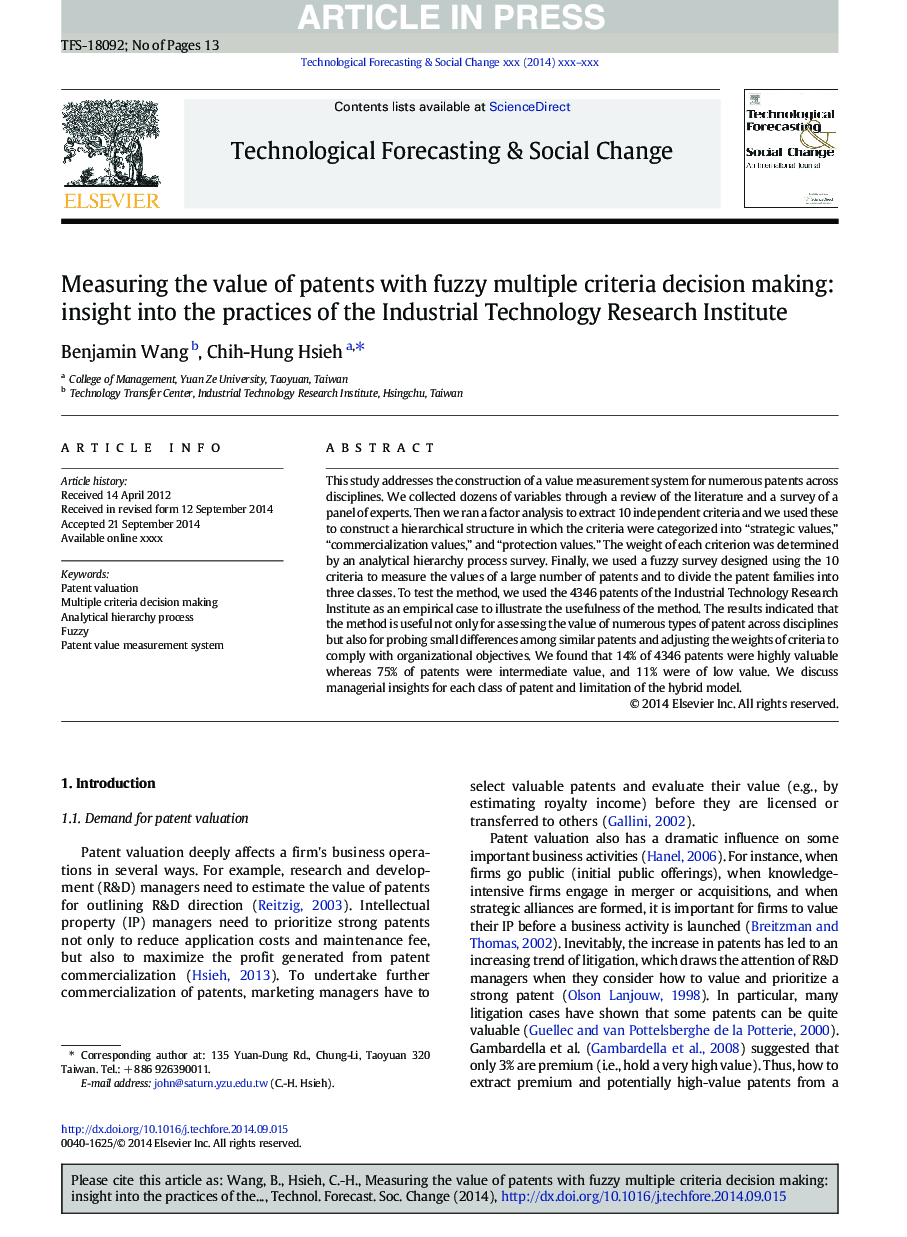| Article ID | Journal | Published Year | Pages | File Type |
|---|---|---|---|---|
| 7256819 | Technological Forecasting and Social Change | 2015 | 13 Pages |
Abstract
This study addresses the construction of a value measurement system for numerous patents across disciplines. We collected dozens of variables through a review of the literature and a survey of a panel of experts. Then we ran a factor analysis to extract 10 independent criteria and we used these to construct a hierarchical structure in which the criteria were categorized into “strategic values,” “commercialization values,” and “protection values.” The weight of each criterion was determined by an analytical hierarchy process survey. Finally, we used a fuzzy survey designed using the 10 criteria to measure the values of a large number of patents and to divide the patent families into three classes. To test the method, we used the 4346 patents of the Industrial Technology Research Institute as an empirical case to illustrate the usefulness of the method. The results indicated that the method is useful not only for assessing the value of numerous types of patent across disciplines but also for probing small differences among similar patents and adjusting the weights of criteria to comply with organizational objectives. We found that 14% of 4346 patents were highly valuable whereas 75% of patents were intermediate value, and 11% were of low value. We discuss managerial insights for each class of patent and limitation of the hybrid model.
Related Topics
Social Sciences and Humanities
Business, Management and Accounting
Business and International Management
Authors
Benjamin Wang, Chih-Hung Hsieh,
